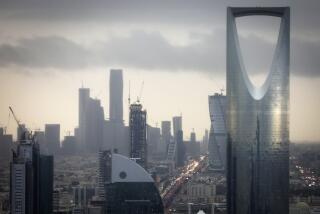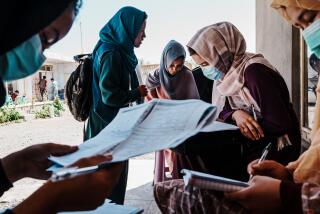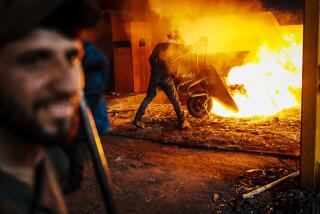A Symbol for Afghanistan
- Share via
Decades of coups, invasions and war have devastated Afghanistan and left it measuring progress by the mile.
This week, President Hamid Karzai cut a ribbon on the rebuilt road from Kabul, the capital, to Kandahar, the major southern city. The 300-mile journey, which had taken 30 hours, now should require six, an encouraging symbol of reconstruction. But the extraordinary security around the event showed how far the country must go to overcome resurgent Taliban fighters and how dependent it remains on foreign aid.
Afghanistan dropped off the radar screen of too many countries once they pledged billions to rebuild damage caused by war against Soviet invaders, civil conflict and the U.S.-led invasion to oust the Taliban rulers who opened the country to Al Qaeda. A 2002 international conference brought pledges of more than $5 billion. United Nations agencies estimated rebuilding would require twice that; the Afghan government this year said it would need $15 billion.
Most of the money spent went to feed and shelter refugees. Funds for reconstruction have been slower in coming. The United States has pledged well over $1 billion this year and should urge other nations to increase their aid.
Support for war on the Taliban after 9/11 was nearly unanimous, with none of the rancor that marked the war in Iraq. However, the Center on International Cooperation at New York University reported that although countries pledged $2.1 billion for reconstruction in the first year after the donors’ conference, a year and a half after the meeting less than $200 million had been spent.
Even when money is available, projects are delayed by the lack of security. Armed guards were required to protect road workers from attack, not always successfully. Suspected Taliban guerrillas kidnapped or killed at least nine Afghan and foreign workers during highway reconstruction.
Lakhdar Brahimi, the top U.N. official in Afghanistan, warned last week that staff members might have to be withdrawn if security did not improve. More than 11,000 U.S.-led troops are hunting insurgents and NATO has a 5,500-member peacekeeping force in Kabul. Brahimi’s call for more troops should be heeded. It does little good to improve the Kabul-Kandahar road and make it easier for farmers to get crops to market and Afghans to reach medical care if guerrillas prevent them from using the highway.
Many nations say they are not opposed to providing more troops, but none has taken the initiative. The U.N. should convene a new conference on Afghanistan soon to remind nations of the progress in the last two years, the continuing danger and the need for money and security forces. Afghanistan cannot be allowed to slip back into chaos lest it again become a spawning ground for terror.
More to Read
Sign up for Essential California
The most important California stories and recommendations in your inbox every morning.
You may occasionally receive promotional content from the Los Angeles Times.













